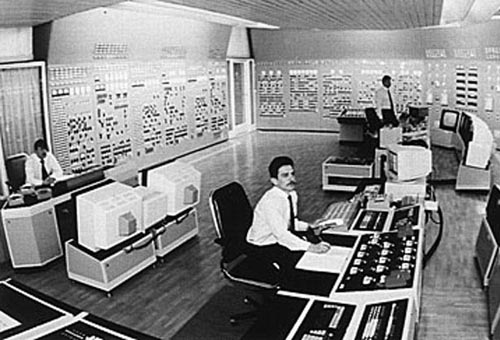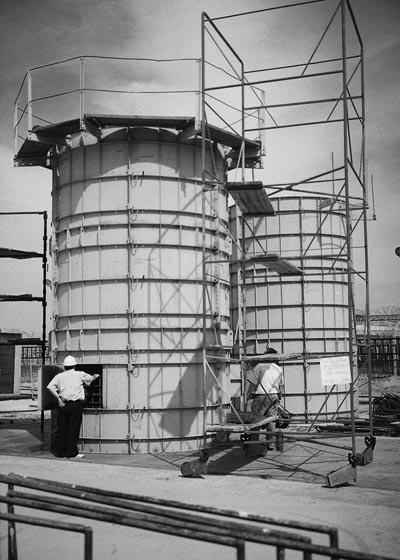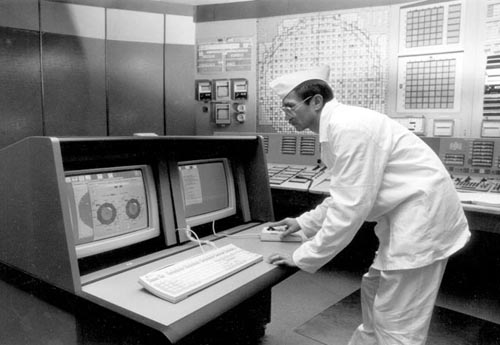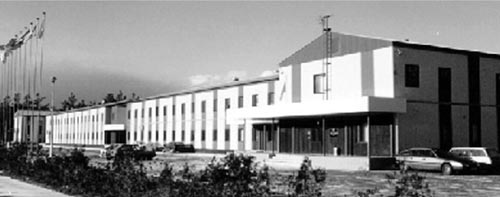2.0 Description of Projects
U.S. efforts to reduce risks at Soviet-designed nuclear power plants are organized
into six areas, ranging from improved procedures and training to advanced safety
equipment, safety assessments, regulatory support, and Chornobyl initiatives.
Because the efforts in each country vary according to need and support from
other countries, projects are not undertaken in every country in each of the
key areas described in the Overview. U.S. work complements the safety upgrade
projects of the host countries, international organizations, and the other G-7
countries-Canada, France, Germany, Italy, Japan, and the United Kingdom. In
all, more than 300 U.S.-supported projects have been completed, are ongoing,
or are planned. These projects are the following:
- Increasing the Safety of Day-to-Day Operations
- Upgrading Safety Systems
- Conducting In-Depth Safety Assessments
- Working Safely with Spent Nuclear Fuel
- Developing Institutional and Regulatory Frameworks
- Addressing Risks at Chornobyl

Reactor operators traing on full-scope control room simulators, like this one at the Balakovo nuclear power plant.
2.1 Increasing the Safety of Day-to-Day
Operations
Management and Operational Safety Projects
Management and operational safety projects increase the ability of plant personnel to operate reactors safely. U.S. personnel work with host-country personnel in the following areas:
Training. Well-trained, safety conscious workers are essential for the safe operation of a nuclear power plant. Under the Soviet system, reactor personnel often worked in isolation from their counterparts at other plants and from the international nuclear community, hindering the exchange of information and lessons learned. Training was not formalized. The training centers in Russia and Ukraine serve as models for similar facilities at each plant. The Systematic Approach to Training is now used to develop formal training courses.
Simulators. A nuclear power plant simulator is an effective, efficient training tool used widely in the international nuclear industry. Two types of simulators are used in training. A full-scope simulator provides hands-on training by replicating the control room of a nuclear power plant. An instructor can select the initial plant operational state, introduce malfunctions and failures, freeze the exercise, and provide retrospective viewing. An analytical simulator uses computer monitor screens instead of replicated control panels. The computer's graphic displays represent plant systems. U.S. and host-country organizations are working together to develop control room simulators tailored to each Soviet-designed reactor.
Emergency Procedures. During an emergency, nuclear plant operators must stabilize
the reactor quickly to prevent damage to the reactor core and release of radioactive
materials. After the accident at Three Mile Island in 1979, a new approach,
called Symptom-Based Emergency Operating Instructions, was developed and implemented
to help operators respond rapidly and appropriately during emergencies.
Previously, operators first determined the cause of an emergency-such as a leak
in a steam generator tube. Then, they followed event-based procedures designed
to correct that specific problem and to contain its consequences. This approach
is still used at most Soviet-designed reactors.
Symptom-based instructions enable operators to respond to emergencies without first determining the cause. Operators can stabilize the reactor quickly by responding to these symptoms. The time saved by quick response to abnormal operating symptoms rather than taking time to determine the cause of the abnormal conditions could prevent a more serious condition from developing.
Host-country specialists are adapting symptom-based emergency operating instructions for use at Soviet-designed reactors. The operators of the pilot plants have developed symptom-based emergency operating instructions for their plants.

Mobile pumping unit for emergency water supplies at Kursk nuclear power plant.
Configuration Management. A configuration management system ensures that a plant's physical configuration is in keeping with its safety design basis, which is the foundation for overall plant safety. Configuration management also ensures that plant drawings and documents are updated consistently to accurately portray the physical configuration of the plant. (For details, see box: Configuration Management Maintains a Match of Design, Documents, and Plant Layout.)
Event Reporting and Analysis. With U.S. support, host-country specialists are developing a process for the systematic investigation of abnormal events at Soviet-designed nuclear power plants. This process, known as event reporting and analysis, calls for determining the cause of events, identifying appropriate corrective actions, and sending written reports to other plants, thus enabling managers at the other plants to take preventive action.
Quality Assurance. With U.S. support, host-country specialists are improving quality assurance practices at nuclear plants in their countries by developing standards, manuals, and procedures to guide plant staff operators.
Maintenance. The United States is working to reduce equipment malfunctions at RBMK plants by supplying up-to-date tools and training for maintenance workers. These reactors share a design that is similar to the Chornobyl plant. Advanced maintenance systems promote safe operations until these plants are shut down.

Dry-cask storage system under construction at the Zaporizhzhya nuclear power plant.
Reliability Database. Having data on the reliability of equipment can focus limited resources for maintenance on those items of most concern to plant safety. The data can guide preventive maintenance for items that show a pattern of failure after a certain amount of use. Reliability databases are being developed for Russia and Ukraine and will be combined into a single database. Other countries with Soviet-designed reactors can share the data by providing reliability data for their plants.
|
Configuration Management Maintains a Match of Design,
When workers upgrade the design of a nuclear power plant or modify operational
This important safety process is called configuration management. By
verifying Inadequate configuration management could lead, for example, to a valve
being In the former Soviet Union, nuclear power plant personnel did not adhere
to The United States is supporting configuration management projects at
Ukraine's |
Nondestructive Examination. The United States is supplying equipment for finding flaws in pipes and steam generator tubes before these flaws can cause problems. Technicians use ultrasonic, x-ray, and eddy-current equipment for nondestructive examination, which enables the technicians to evaluate pipes for tiny flaws and cracks without unnecessarily destroying the pipes. (For details, see box: Equipment Finds Pipe Flaws Before They Cause Problems.)
Risk-based inspection is a related concept. Workers use risk assessment analysis to establish inspection priorities, examining more frequently the structural integrity of components that pose the highest risk of causing core damage, loss of containment, or radiological harm outside the plant.
Conduct-of-Operations Procedures. Historically, much of the daily business of operating nuclear power plants in the former Soviet Union was based on the knowledge and experience of individual operators, which could vary among individuals and among nuclear plants. To address this situation, the Institute for Nuclear Plant Operations good practices-a set of administrative and management procedures-were adopted for use at Soviet-designed plants.
Operator Exchanges. In the former Soviet Union, nuclear power plant personnel had few opportunities to learn from their counterparts in other nations. To improve the cross-cultural sharing of information, the Institute of Nuclear Power Operations and the World Association of Nuclear Operators began sponsoring operator exchanges in 1989. The exchanges enabled operators of Soviet-designed plants to observe firsthand the U.S. approaches to safe operations and then to adapt these practices to operations at their own plants. From 1995 to early 1997, the Department of Energy funded additional exchanges. These projects are now completed. Personnel from Soviet-designed plants continue to visit U.S. plants as part of training and technology transfer for specific safety projects.
|
Equipment Finds Pipe Flaws Before They Cause Problems Preventing leaks and ruptures in pipes is a crucial task in nuclear plant
maintenance. Maintenance workers must find flaws in pipes before they develop into
cracks. To accomplish this, workers use several types of equipment-including
ultrasonic, In addition to inspecting pipes, workers must examine hundreds of meters
of Nuclear power plants in Ukraine and Russia have lacked adequate equipment
for |
2.2 Upgrading Safety Systems
Engineering and Technology Projects
Engineering and technology projects reduce risks by upgrading the physical safety systems of nuclear power plants. The United States is transferring equipment, training, and procedures to improve the operation of safety systems and to reduce the risk of fires at Soviet-designed plants.
Safety Parameter Display Systems. When an abnormal event occurs at a nuclear power plant, safe resolution requires rapid, effective response. A safety parameter display system collects and displays critical safety information at workstations in the control room and other locations in the plant. Information on the status of key conditions, such as reactor core cooling and radioactive material confinement, is displayed in an easily interpreted format on a computer screen. The system enables operators to assess plant conditions rapidly and take quick corrective actions.
Specialists at U.S. nuclear power plants developed safety parameter display systems after the 1979 nuclear accident at Three Mile Island. That accident underscored the need for better information systems in reactor control rooms.
The United States is working with specialists in Ukraine and Russia to develop safety parameter display systems for Soviet-designed nuclear power plants. U.S. and host-country experts also are developing symptom-based emergency operating instructions. When a safety parameter display system indicates abnormal conditions, the emergency operating instructions specify the appropriate corrective actions to take.

Safety parameter display systems, like the one at Kursk nuclear power plant, provide key information for preventing accidents.
Safe-Shutdown Analysis of Fire Risks. A safe-shutdown analysis identifies the most dangerous fire risks at a nuclear power plant and concentrates on areas where fire could damage the safety systems needed to shut down a reactor safely.
A nuclear power plant relies on standby safety systems to control the reactor during an emergency. For example, if the nuclear fuel begins to overheat, an emergency core-cooling pump will send cooling water to the reactor core. If fire damages an essential safety system, however, operators may be unable to shut down the reactor safely, and damage to the reactor core and release of radioactive material could result.
To ensure safe shutdown in the event of a fire, international standards call for fire zones and backup safety systems. Each fire zone has barriers to prevent the spread of fire to other zones of the plant. Each essential safety system has a backup system located in a different fire zone. If fire damages one safety system, such as the emergency core-cooling pump, a backup pump can be used for cooling while operators shut down the plant.
Soviet-designed nuclear power plants, however, were not designed with the concept of fire zones to prevent the failure of backup safety systems. The safe-shutdown analyses can guide safety upgrades and maintenance activities at Soviet-designed plants.
Tools and Equipment for Effective Fire Protection. A fire at a nuclear power plant can be catastrophic to the plant, the workers, and the public. Besides endangering personnel, a fire can damage plant safety systems, leaving operators unable to shut down the reactor safely. The result could be damage to the reactor core and the release of radioactive material. The United States is providing materials and equipment to Soviet-designed plants to improve the ability of operators to prevent, detect, contain, and suppress fires.
In 1992, western visitors to Soviet-designed plants found unprotected electrical circuits, electrical cables spray-coated with flammable insulating material, and ill-fitting, wood fire doors. The United States is supplying materials to prevent the occurrence and the spread of fires.
Unlike U.S. nuclear power plants, which rely on multiple automatic alarm and protection systems to detect and suppress fire, Soviet-designed plants rely on large brigades of dedicated fire personnel. These fire brigades need to be able to detect fires reliably and alert staff immediately. They also must have the equipment to effectively fight fires. To meet these needs, the United States is supplying basic equipment for detecting and controlling fires.
Materials and Equipment for Improved Radiation Confinement. A reactor's confinement structure is designed to prevent the release of radioactive materials to the environment in the event of a nuclear accident. The United States has supported work to reduce leaks in confinement systems at several Soviet-designed plants.
Backup Power Systems for Emergency Plant Shutdown. The United States has provided reliable direct-current backup power systems to several Soviet-designed plants. The backup power system enables operators to control plant conditions and to safely shut down the plant and maintain reactor cooling when an emergency disrupts normal power supplies to the plant. At some Soviet-designed plants, open-cell glass batteries provided direct-current backup power. The cells often failed; during charging they released flammable hydrogen gas; and they could not stand up to operating conditions created by an earthquake. To resolve these issues, the United States provided reliable backup power systems using closed-cell batteries mounted on seismically qualified racks and switchgear.
Circuit Breakers and Motor-Operated Isolation Valves. The United States is working to improve 400 volt and 6000 volt circuit breakers for Soviet-designed plants. In a separate project, the United States is seeking to improve the reliability of motor-operated, safety isolation valves at Soviet-designed plants. These efforts involve the transfer of nuclear qualified manufacturing capabilities to host countries.
Emergency Water Supply and Emergency Cooling Systems. Nuclear plants must maintain backup water supply systems to ensure a continuous supply of cooling water to reactor systems. The United States provided several mobile pumping units that can be moved where needed during emergencies involving loss of cooling water to a reactor core. Once in place, a mobile pumping unit can be connected to an emergency water source by flexible piping. A diesel generator provides power for the pumping unit, thus maintaining independence from the nuclear power plant.
Electronic Control-and-Protection Systems. The United States is supporting several projects to improve the reliability of electronic control-and-protection systems. These systems automatically shut down a plant if conditions exceed unreliable boundaries. Electronic modules for these systems have become unreliable and replacement parts are hard to find. In Lithuania, a capability was developed with U.S. support to manufacture replacement control modules that have the same dimensions and characteristics as the original modules but employ reliable, modern electronics. These modules have now been used to replace modules in Ignalina Unit 2. The United States also provided upgrades to the existing reactor protection systems at the two Ignalina units. The improved reactor protection systems provide protection against transient accident events that were identified in the independent safety review of the Ignalina plants as major contributors to the risk of Chornobyl-like accidents. In Russia, with a large number of plants requiring instrumentation-and-control system upgrades, a more comprehensive approach is being followed involving the complete replacement of these systems. A simulator-based test facility is being established at the Russian Institute for Nuclear Power Plant Operations (VNIIAES) in Moscow. All new digital instrumentation-and-control systems will be tested at that facility before the systems are installed in Russian nuclear power plants. Within this project, western technology related to the design and fabrication of modern, digital control systems and to the testing and licensing of these systems is being transferred to partcipating countries.
2.3 Conducting In-Depth Safety AssessmentsPlant Safety Assessment Projects
In-depth safety assessments of Soviet-designed nuclear power plants lead to quantifiable and sustainable improvements in plant safety. Safety assessments allow the plant operators to determine the most significant risks and to establish priorities for safety upgrades. Typically, assessments involve two kinds of analysis methods: "probabilistic" and "deterministic." (For a description of these analyses, see box: In-Depth Assessments Identify Safety Needs at Nuclear Power Plants.)
Safety Assessments. Through U.S. guidance, host countries gain the technology and expertise needed to perform plant safety assessments that identify weaknesses in the plant's design and operation. The knowledge gained through this process results in direct improvements in plant safety and reduces the probability of accidents. U.S. specialists work with host-country staff to define the scope of safety assessments, collect the necessary data, and carry out required analyses.
Information Exchanges. The United States has sponsored international forums and workshops for exchanging information on in-depth safety assessments at Soviet-designed reactors. The International Atomic Energy Agency and the Swedish International Project on Nuclear Safety also have supported this effort.
Beginning in 1996, annual forums focusing on analytical methods and computational tools for conducting assessments have been held in Obninsk, Russia. The latest forum attracted more than 100 participants representing power plants and technical organizations from a dozen countries.
|
In-Depth Assessments Identify Safety Needs at Nuclear Power Plants At a nuclear power plant, experts conduct in-depth safety assessments
to determine U.S. experts are working with Ukrainian and Russian experts to help them
conduct The safety assessments under way in Ukraine and Russia involve two kinds
of Probabilistic assessment
Experts use computer codes to calculate the safety margins for each
accident To use RELAP5, analysts enter data about a nuclear power plant, creating
a computer The United States is working with host-country experts to ensure that
RELAP5 The use of RELAP5 and other computer codes is part of the training in
safety |
Technical Support for Plant-Specific Safety Assessments. U.S. experts are working with host-country experts to help them conduct in-depth safety assessments at specific plants. U.S. support includes the transfer of computer codes for performing risk analyses, training in the use of the codes, guidance in conducting the assessments, and review of the work performed by plant specialists. The program emphasizes the plant's responsibility for assessing and maintaining safety. When the assessments are completed, host-country specialists will have a technical basis for identifying which factors at a plant contribute most to radiological risk. They also will have a technical basis for determining the most effective safety upgrades. Through this work, plant engineers obtain better understanding of the plant's configuration and its behavior during abnormal events. The plant staff is, thus, better prepared to respond in emergency situations.
Computer Analysis Codes. When analysts use RELAP5 and other computer codes in safety analyses, they must make sure the codes accurately represent and predict the configuration and behavior of the reactor being analyzed. In a process called validation, analysts check the codes against test data. These data are produced by experimental facilities designed to simulate the behavior of a specific type of reactor. In a process called verification, analysts use the safety analysis codes to develop plant models and accident scenarios, and then check the models and scenarios against data from actual reactors.
2.4 Working Safely with Spent Nuclear FuelFuel Cycle Safety Projects
Fuel cycle safety projects improve capabilities for storing spent reactor fuel.
Dry-cask storage. The United States has transferred equipment and training to establish a dry-cask storage system for spent fuel at Ukraine's Zaporizhzhya plant.
Spent fuel management. U.S. engineers are working with Ukrainian engineers to develop an in-country system for managing spent fuel.
Transferring fuel storage technology. The United States has transferred a computer code for use at a Hungarian dry-storage system.
2.5 Developing Institutional and Regulatory FrameworksNuclear Safety Institutional and Regulatory Framework Projects
U.S. experts are working with Ukrainian and Russian regulatory experts to develop strong legal frameworks for regulating Soviet-designed nuclear power plants. The objective is to promote
- strong, independent regulatory bodies with the capabilities needed to regulate nuclear activities
- host-country adherence to international nuclear safety treaties and liability conventions
- protection for U.S. contractors from undue liability in foreign and U.S. courts if a malfunction or accident occurs at a Soviet-designed nuclear facility where the U.S. contractor has provided services.
The Nuclear Regulatory Commission has the primary U.S. responsibility for this area of work. The National Nuclear Security Administration provides support by transferring training and technology to regulatory organizations that oversee cooperative safety projects, transferring guidelines for developing procedures and validating computer analysis codes, and implementing agreements with Ukraine and Russia on regulating fuel cycle facilities.
2.6 Addressing Risks at ChornobylChornobyl Initiatives
The United States is reducing risks at Ukraine's Chornobyl plant through three major efforts.

Shelter around Chornobyl Unit 4.
Shelter Project. U.S. specialists participated in an international effort to assess the stability of the shelter around the ruined Chornobyl Unit 4 reactor and develop a plan for stabilizing the current shelter or constructing a new one. In addition, the U.S. provided equipment and training to protect shelter workers from radioactive and industrial hazards, suppress the radioactive dust inside the shelter, and address other urgent safety concerns.
Chornobyl closure. U.S. specialists are working with Ukrainian specialists to develop technical strategies for deactivating the entire Chornobyl plant. The United States is working with Ukraine to complete the construction of a new heat plant to provide the necessary heat and power to support decommissioning activities following the shutdown of the plant in December 2000.
International Chornobyl Center. The United States and Ukraine jointly established the International Chornobyl Center for Nuclear Safety, Radioactive Waste and Radioecology in 1996. The center supports safe operations at Chornobyl and other Ukrainian nuclear power plants, addresses human safety and environmental issues created by the 1986 Chornobyl disaster, and works to alleviate socioeconomic problems related to the plant's future decommissioning. Experts from the International Chornobyl Center's primary technical branch, the Slavutych Laboratory for International Research and Technology, is collaborating with experts from the United States and other countries on joint technical projects for nuclear safety.
As the Ukrainian participant in the network of International Nuclear Safety Centers initiated and encouraged by the Department of Energy in the mid-1990s, the International Chornobyl Center works with centers established in Armenia, Kazakhstan, Lithuania, and Russia to promote the open exchange of information, to cooperate in the development of technologies associated with nuclear power engineering, and to collect and disseminate important information on nuclear safety and technical improvements in nuclear technology.
The International Chornobyl Center's Slavutych Laboratory.